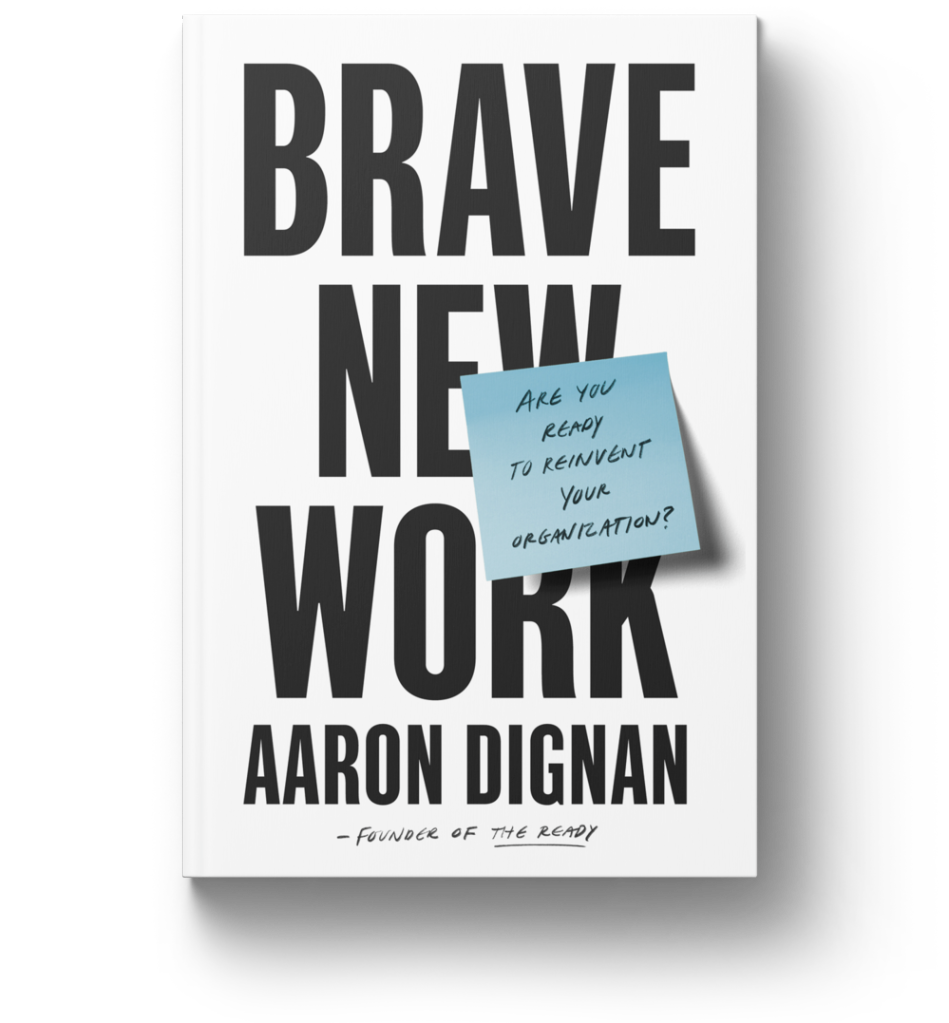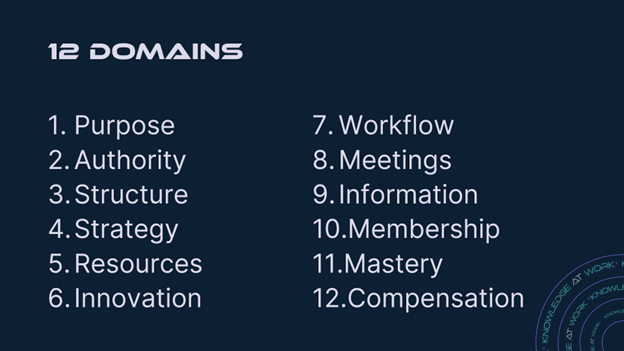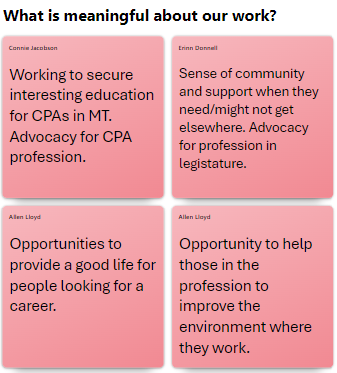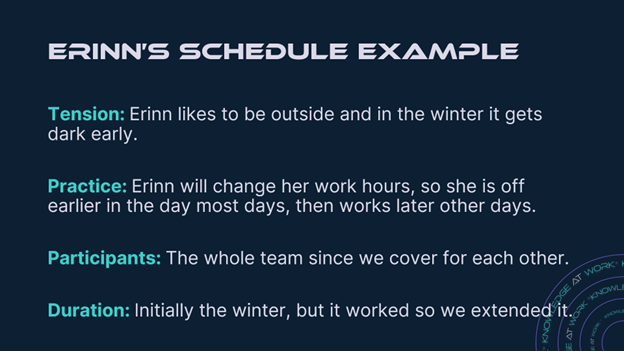Knowledge at Work - Episode 3
Brave New Work
In episode 3 we are covering Brave New Work, a book by Aaron Dignam. Brave New Work is a book with three parts:
The future of work, the operating system, and finally - the change.
We will explore each section at a high level then discuss how to apply the concepts to talent, management, and organization.


Future of Work
In this section the book provides a fantastic overview of the history of organizational design and management as it applies to how organizations got to where they are today. They also present two concepts to build something new:
People Positive
To be People Positive is to assume and expect the best of everyone.
This concept comes from a paper published in 1960 by Douglas McGregor called The Human Side of Enterprise. Yes research from over 60 years ago still hasn’t been widely implemented. The paper presents two ways of thinking about people:
1.People naturally dislike work and will avoid it if they can.
2.People naturally expend physical and mental effort to survive and thrive.
Now think about the organization you would build depending on which of these you feel is true. Another test for you look around your organization and ask yourself which view leadership has.
I am going to touch on time as it relates to this concept. If a person feels people will avoid work they will put rules in place that mandate specific hours. If you don’t do that then people will never work, right?
On the flip side if a person recognizes that people have some intrinsic desire to accomplish things they would allow more flexibility.
Complexity Conscious
Complexity Conscious leaders view performance as the result of collective intelligence, emergence, and self-regulation.
This concept is built on the difference between complicated and complex.
Complicated things are causal, X causes Y predictably. Complicated things can be very intricate and confusing to a novice but at the end of the day they can be understood in their entirety.
Complex things on the other hand are dispositional, we cannot solve to find the answer. We can predict parts or directions just not the exact result.
An example from the book is a car’s engine is complicated when traffic is complex.
Again think about how seeing organizations and teams as complicated or complex would drive very different solutions.
A complicated organization just needs the right set of rules to make everything work perfectly. Thinking back to the first episode the management concepts of Taylor follow this thinking.
Alternatively, a complex organization needs direction.
People Positive & Complexity Conscious
Lets combine these two concepts together.
We can expect people to not want to work then expect to have one way to actually get people to do what we want. Eventually we grow to a size where we can hire people to make sure the people are following the rules and everything is working perfectly. If an issue comes up we just add more rules and further restrain how the people act.
Or we can expect people to contribute and allow them to figure out the best way to operate without a massive set of rules and regulations limiting their every move.
Obviously, these are extremes on a spectrum and clearly organizations need to find the right balance. BUT, my advice to you is to try to move towards trusting your people and reducing the complexity they have to navigate.
The obvious question is how the heck do we do that? Well lucky us the book goes there next!
The Operating System
The second section of the book focused on the OS Canvas, a matrix of 12 different domains that link together to create the operating system for your team or organization.

At the Montana Society of CPAs we went through a very deliberate process to craft our operating system. We are a team of three people so it was very easy to give everybody in the process a voice. Our process looked like this:
- We read the book. If you are interested in this concept, I highly recommend buying the book it has a bunch of resources to make the rest of this process easy.
- We answered the questions at the end of each domain.
- We documented the answers on a shared document.
- We plan to revisit domains over time to refine our operating system.
It sounds easy enough, but some of the questions require some thought and discussion. As the leader of our organization, it was difficult to shift some autonomy and expectation around the team. Here is an example of one of the questions we answered:

The Change
The final section is focused on the change. I really enjoy the beginning of this section as it identifies the core desire most people have after reading the first two parts of the book. Lets go do this and change things and make the organization better! BUT the reality is most organizations have tried this light switch jump on the cool thing approach enough times that the people are never going to buy into it.
In order to make meaningful change we need a slightly different approach and again thankfully the author gives us some guidance.
Continuous Participatory Change
If we see our organization as something that is complex then coming together to work through the questions and publishing your new operating system is a fools errand. What we need to do is adapt and change how we operate and use the operating system as a guide that is written in pencil and constantly open to evolution. Ideally that evolution is built on experimentation. The world is going to continue to change, having a system that accepts and encourages adaptation will help your organization become more resilient.
Dignan talked about continuous participatory change and the need for change to both continually happen and to involve the people who are impacted. Allow your people to identify issues, propose solutions, test those solutions, and then implement what works best.
Looping
The book goes into detail on this idea of looping which has three stages and works as a constant cycle.
Sensing tensions, again a plug for the book it contains a long list of potential tensions that can be experienced by organizations, 2 pages full! . An example is Bottlenecks in decision making. The start is a process to sense something is creating tension, this can be done by anybody.
Next is proposing practices, again the book has a wonderful list of practices to help brainstorm options here. The important thing is to come up with something to try it doesn’t have to be perfect.
One of the things I like most about this operating system framework is it allows organizations to make progress. Typically, people get upset when they feel nothing is being done. When we try to find the perfect solution or rule that takes time and that has a negative impact. Being able to quickly present a potential solution helps ease people’s anxiety over the tension.
Last is to experiment. This part is far more scientific than you are likely used to in your organization. Experiments should be documented so that people understand what is changing and how and when the change will be evaluated. I really like the idea of saying we are going to try this for this amount of time then evaluate how it is working.
I want to share an example from MTCPA. We did this without formal documentation, but in hindsight we followed the process recommended by the book.
Erinn came to me with a tension, she proposed a change and we tried it out.

In our case the experiment worked and Erinn got to be outside more and the Society wasn’t negatively impacted - so we decided to continue the practice.
This may feel like a trivial thing, but for many people little changes like this or having the flexibility to pick kids up from school makes a huge difference. When we think of our people as trying to avoid work we see these requests as work avoidance. If we can see our people as wanting to accomplish things, then we see these changes as small ways we can help them balance work and life to be as productive as possible.
Communicate Tensions
It is really easy to tell you to bring up tensions. It is really difficult to do this in practice. Some advice to make this easier:
- Document what is bothering you and why it bothers you. The why is critical, if you do not explain why the other person is going to make up a why and I can almost guarantee it will not be the same.
- Rehearse how you will share the tension. If you can share with someone else and explain to them, they can help you refine your message. Often in a work environment you will have trusted people you share with who have common concerns. Presenting your concerns together can be effective, but be careful in how you do this. Two people asking to have something addressed can add validity to the tension. An entire team coming together feels like a mutiny.
- Come with a practice in mind. This is no guarantee it will be implemented, but bringing problems without solutions can make you look like someone not invested in making things better.
- Accept change might look different than you expect. Remember that we are all facing things where there is no one known solution. Being open to solutions shows a willingness to work together. Just make sure there is also a commitment to review how things are going.
Experimentation
Experimentation is a near constant theme throughout this series.
In a world where the outcome is not known being able to try new things and evaluate their impact is critical.
Having an open mind and working with your team to try things is a skill that will help you grow and accomplish more.
Trust
A huge part of creating a great organization and relationships is having trust. I do not want you to forever blindly trust everybody. BUT putting some trust in your managers and leadership is the fastest way to get some trust in return.
Communicating tensions and trying new things can be stressful. But accepting a tension is also stressful. For these concepts to work and for your work life to improve it is critical to be willing to trust others.
Experimentation
Just as experimentation is a constant theme for talent it is also a consistent tool for management.
You too need to work on developing these skills to manage a more impactful team.
Tensions
Brave New Work uses the term tensions. You can think of these as issues or problems.
As a manager one of your roles is to identify and try to resolve tensions. This can be incredibly difficult as often it is interpersonal issues that cause tensions to arise.
Using the framework from Brave New Work gives you a tool to have conversations then to collaborate with your talent to find a good solution. Ideally this will link to experiments where you can agree to try a solution for a period of time to see if it works.
One thing I want to highlight is this framework depends on tensions being recognized. As management I would encourage you to do two things related to this:
- When your Spidey sense notices something acknowledge it and dig in to see if there is something there.
- When your talent bring a tension to you acknowledge it. We talked earlier about trust and the easiest way to lose trust from your talent is to listen but not hear tensions they bring to your attention.
People > Process
As a manager it is much easier to make a mandate and force talent to do exactly what you want. This tells talent you do not trust them and that you are the person with all the solutions. This then means talent will not look to solve problems, but will bring every issue to you to be solved.
What is more difficult is to figure out how best to use each person on your team then figure out what motivates them and provide incentives and assignments that energize and excite your team. Especially if your work is cyclical and you have especially busy times this can be difficult. Not everyday can be perfect projects and assignments. But finding balance and helping your team also find balance is a critical role as management.
The last thing I want to highlight before moving onto the organization is management should recognize that managing is a skill. This framework provides tools, but you need to learn how to apply them and you need to learn yourself. Not everybody is built to be a manager. Often in a professional service firm technically talented people are promoted into management. Recognize technical skill and management skill are different. You wouldn’t try to do a new kind of technical project without some training, management is no different.
Build an OS
If this concept resonates I encourage your organization to buy the book and work through the questions. Depending on the size of your organization this many happen once or many times. This is a hands-on exercise and at each level talent and management should be involved in that process. Not every person should be involved at each level, but being deliberate to include people will payoff in the long run.
If this is uncomfortable start at a higher level and waterfall the process to teams as they are ready.
This is also an area where following the book’s advice to not try to build this instantly is important. We talked about tensions in the talent and management sections. If you want to implement this, finding the current tensions is a great place to start. Pick something that is creating tension and talk through the questions and build experiments to try and solve it. Once you show your talent and management that there is a process that works to resolve tensions they will be more open to applying it to other tensions.
Experimentation
Experimentation is a key tenant of Brave New Work. Admitting we do not know the right answer and that the right answer today may not be the right answer in the future opens the organization up to the potential of trying different things.
Where the organization has a critical role to play is in creating a framework for your talent and managers to follow. Simply randomly doing things is not an experiment. Creating a clear framework that outlines who is trying what, who is impacted, and what outcomes will be measured allows for controlled experiments.
Flexibility
As the author explained if we trust our people have an innate desire to do a job and complexity carries a cost it makes sense for organizations to prioritize flexibility over complexity.
An example of this could be providing values to talent to apply to situations instead of trying to document procedures for any potential issue.
Linking this flexibility to experimentation creates opportunities to try new things that may be challenging at the organizational level. Framing adding flexibility as an experiment allows your talent and management to implement something and report back on how they did it and what they learned. This can then feed into further iteration to find the ideal solution.
I want to recognize that flexibility pushes effort to the organization. In a rigid system the organization does not have to deal with grey areas. Mandating things is far easier to manage than being flexible. On the flip side mandating everything will make talent feel you do not trust them.
%2012.18.png)
